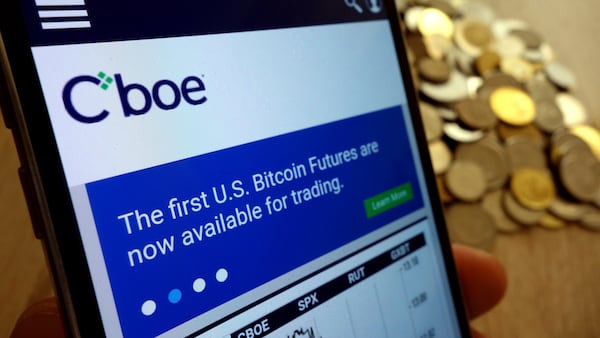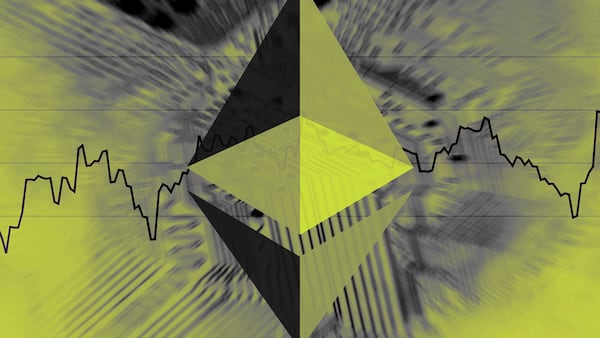- DeFi protocols Aevo and Dopex are looking to gain market share from centralised options exchanges.
- To do so, they're looking to lure market makers with increased capital efficiency.
- Dopex's new offering lets users create options from Uniswap v3 liquidity positions.
DeFi protocols are revving up for another push to popularise onchain options trading.
The potential reward? A slice of the lucrative Bitcoin and Ether options market, which hit a record $24 billion last month amid trader optimism about approval of spot exchange-traded funds for the top two cryptocurrencies.
But there’s a snag.
Options protocols are struggling to lure market makers away from centralised exchange giants like the CME Group, ByBit, and Binance.
“The options market is primarily dominated by institutional players,” Julian Koh, founder of Aevo, an Ethereum layer 2 built specifically for options and futures trading, told DL News.
“If your protocol does not allow the top 10 options market makers to participate, it will not be able to scale,” Koh said.
That’s because like the wider financial system, the key to offering options trading is liquidity. If protocols can’t attract enough big users to create options and place lots of trades — namely market-making firms — it’s difficult to compete.
Options are derivatives that let traders speculate on price moves or hedge against market volatility.
A relatively small number of options are bought and sold on blockchains.
According to DefiLlama data, deposits to DeFi protocols offering options total just $150 million.
Capital inefficiency
One of the biggest reasons DeFi protocols have lagged their centralised counterparts is that they don’t offer the capital efficiency market makers have come to expect when trading options.
“Most options exchanges use a ‘portfolio margin’ system which looks at your entire portfolio of positions, and simulates which positions potentially offset each other,” said Koh.
When selling options, traders need to supply collateral to back them. Koh explained that with portfolio margin, bullish and bearish options bets can partially cancel out collateral requirements.
Portfolio margin systems are easy to implement on centralised options exchanges where an exchange’s database can easily keep track of users’ options bets. But creating them in DeFi using only smart contracts is more difficult.
“Without portfolio margin, options market making is super capital inefficient and is a deal breaker for most market makers,” Koh said.
According to Koh, Aevo was the first options protocol to implement portfolio margin. It’s the most-used DeFi options protocol with a 79% share of the onchain options market and almost $700 million of cumulative trading volume.
Utilising Uniswap
But implementing portfolio margin isn’t the only way protocols are looking to improve capital efficiency.
Dopex, another options protocol which became a favourite among traders in 2022, is letting users sell options against liquidity positions using Uniswap’s v3 architecture, in addition to also implementing portfolio margin.
According to Bosslmp, a pseudonymous options trader and adviser to Dopex, this new method potentially lets liquidity providers earn higher yields from their crypto than by providing liquidity on decentralised exchanges.
Uniswap’s v3 liquidity positions function similarly to options in that a user can specify a specific price range to sell one token into another, he said.
Dopex’s plan is to allow users to sell options at various price intervals of a Uniswap v3 liquidity position to earn a premium.
If a user sells options on a range of different price intervals, they will earn a premium on those that expire worthless, Bosslmp told DL News. “On average, you could get more premium than the fees you would get with Uniswap v3.”
This system, which Dopex calls its concentrated liquidity automated market maker — or CLAMM — launched yesterday, and has already registered over $1.2 million of trading volume across Ether, Wrapped Bitcoin and Arbitrum token options.
To complement Dopex’s CLAMM, the protocol will also launch an options automated market maker, a way for users to buy and sell options without providing liquidity. Because of the complexity involved in coding the options AMM, it’s not planned to launch until the first quarter of 2024.
‘People want to trade more options’
While Dopex’s new products sit on the cutting edge of development, the protocol may still find it hard to attract market makers.
According to Koh, many market makers aren’t interested in using an AMM system for options trading. “They want to price options using their own internal models,” he said, instead of using the algorithms that AMMs use.
But Bosslmp said he’s more optimistic. He said the market makers Dopex has talked to are the most interested in using its upcoming options AMM. “For us to really attract the big market makers we need the option AMM,” he said.
Whether Dopex’s options AMM will win out over Aevo’s portfolio margin model remains to be seen. But both parties said they agree that onchain options is a growing market.
“People want to trade more options,” Koh said. “They can be used for hedging, can be used to express views on ranges, can be used in structured products, and so on — not just pure leverage.”
Tim Craig is DL News’ Edinburgh-based DeFi correspondent. Reach out to him with tips at tim@dlnews.com.







